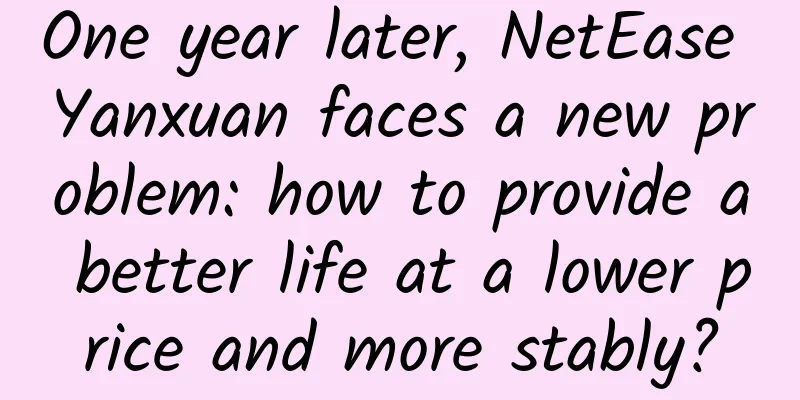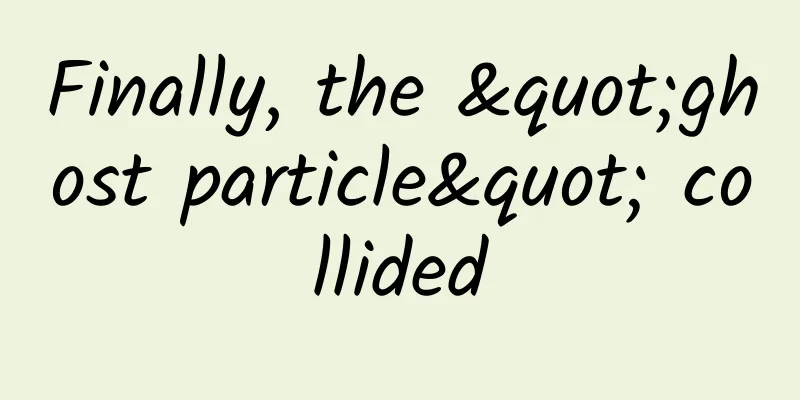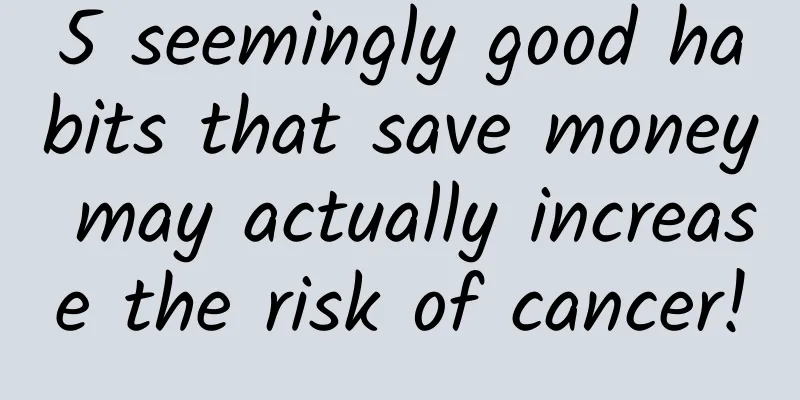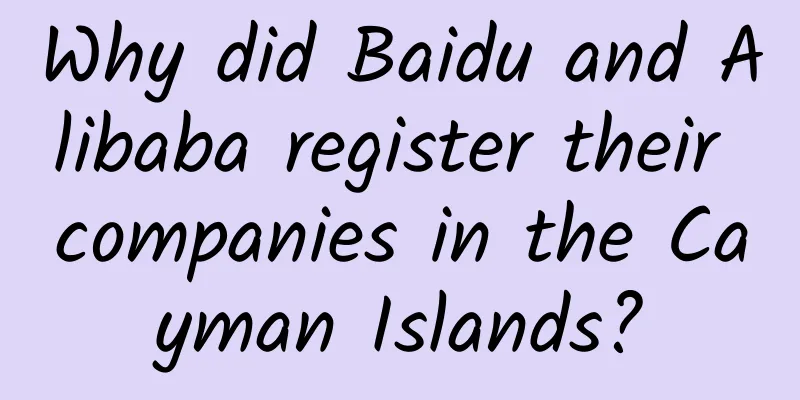A moldy cantaloupe began to change the fate of mankind...
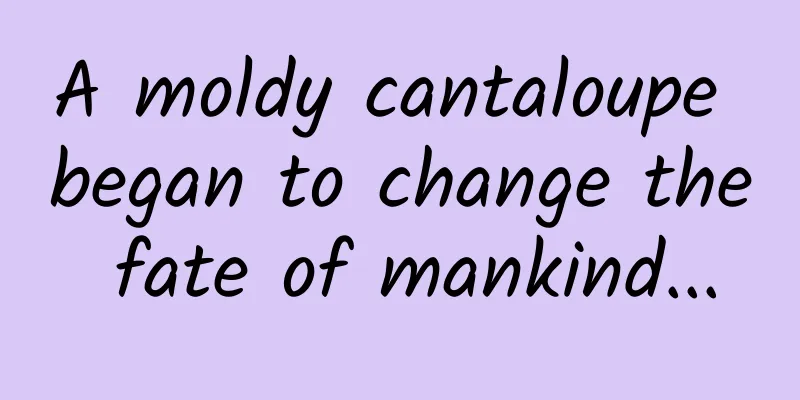
|
The discovery of penicillin is probably the most famous accident in the history of science. A contaminated petri dish made people remember the contribution of Scottish biologist Fleming. In fact, from the discovery and purification of penicillin to its large-scale production, it was a series of coincidences that led to the medical practice of this great discovery. Among them, a moldy cantaloupe changed the fate of mankind. Written by | Pikachu Bulbasaur Fleming Laboratory Museum at St. Mary's Hospital, London. | Source: St. Mary's Hospital, London St. Mary's Hospital, London, England. Tucked away in a tiny room is a memorial to one of the most important discoveries in medical history: a mold that changed the world and saved millions of lives. To commemorate Alexander Fleming and his historical contribution to the discovery of penicillin, a small museum was built at St. Mary's Hospital where Fleming discovered penicillin. The museum recreates the laboratory where Fleming discovered penicillin in 1928, including his microscope, culture dishes and other experimental equipment, and even a replica of the cigarette he never put down while working. Frozen samples of Fleming's original isolate, designated Penicillium rubens IMI 15378, are preserved in collections around the world, but penicillin is not produced today using the strain he discovered. In fact, the strain that underpins today's multibillion-dollar penicillin production originated from a moldy cantaloupe at a market in Peoria, Illinois, in the early 1940s. Just like many things we take for granted but cannot do without (such as X-rays and microwave ovens) actually come from accidental discoveries: the discovery of penicillin also came from coincidence, and it should be said that it is one of the most famous accidental discoveries in the history of science. What's more amazing is that since the first discovery of penicillin, every major step that followed seems to be full of adventures. Biographer Gwyn Macfarlane described this process as "a series of almost incredible accidents." Before the advent of antibiotics, even the smallest cut could be fatal to humans. The discovery and mass production of penicillin not only immediately saved the lives of countless soldiers at the end of World War II from dying of infection, but also had a long-term impact, and its influence is still felt today. Antibiotics: The Prequel In ancient times, both in China and abroad, phenomena beyond human understanding and control were often interpreted as "punishment from the gods" or "curse from the devil." Before the discovery of antibiotics, infections caused by microorganisms were such a thing. As one of the main causes of human illness and death for thousands of years, "infection" was once far more frightening than the cancer we fear today. It is generally believed that penicillin is the first antibiotic discovered and used in human history, but in fact it is not. Human attempts to use microorganisms to treat infectious diseases by "fighting poison with poison" have been recorded in Serbia, China, ancient Greece, and ancient Egypt thousands of years ago. The ancient Egyptian "Eber's papyrus" (about 1550 BC) described the use of moldy bread and soil to treat infections. Similarly, traces of tetracycline were detected in human bones found in the Dakhla Oasis in Egypt, indicating that ancient humans may have ingested this natural antibiotic in some way. In modern history, the first antibiotic successfully extracted from nature using modern scientific methods was not penicillin, but mycophenolic acid. In 1893, Italian doctor and microbiologist Bartolomeo Gosio isolated this crystalline solid antibiotic from Penicillium glaucum (now called P. brevicompactum) while studying pellagra. Studies at the time showed that mycophenolic acid not only inhibited the growth of Bacillus anthracis, but also had multiple properties such as antiviral, antifungal, antitumor and antipsoriatic. People usually remember and praise various "firsts", so why is it that penicillin and its discoverer Fleming were not the first, but they were still able to win the Nobel Prize, be written into textbooks, and be praised by people from all over the world? On the one hand, although penicillin was not the first, it was the most widely used antibiotic with the greatest and most far-reaching impact in the world and saved the most lives; on the other hand, the history of the discovery and application of penicillin has an irreplaceable "story": there are wars, politics, capital, science, humanities and ethics; there is the glory of new drugs saving lives, and there is also the helplessness of the end of medicine. The whole story, starting with the scientist's flash of inspiration, is intertwined with a series of ups and downs of coincidences. If there is a screenwriter who is willing to sacrifice his hair and a group of reliable actors, such a plot can definitely be made into a blockbuster like "Oppenheimer". The first coincidence in the discovery of penicillin: a contaminated bacterial culture dish On an ordinary day in September 1928, Alexander Fleming, who was doing experiments, just returned to the laboratory after a two-week vacation. He suddenly found that due to neglect, a plate of bacteria he raised had molds of various sizes. In layman's terms, the experimental subject had grown hair. He wanted to throw it away, but he accidentally saw that around a large group of mold, there was a circle of regular "transparent zone", while outside this circle of transparent zone, the bacteria were growing well. In other words, the bacteria within this circle of transparent zone seemed to have lysed and died. “The staphylococcal colonies became transparent and were evidently lysing… After one or two weeks of incubation at room temperature, the broth of the mold exhibited marked antibacterial activity against a variety of common pathogens, with both bactericidal and bacteriolytic effects,” Fleming wrote in a 1929 paper in the British Journal of Experimental Pathology. A ball of mold on a bacterial culture plate and the surrounding "bacterial death zone". | Source: Internet Why? Fleming thought that the mold might have produced a substance that was lethal to bacteria. Through species identification, he determined that the mold was a Penicillium notatum, and for the first time named the substance it secreted that could kill bacteria "penicillin." Do all fungi have this ability? Fleming quickly tried to culture several other molds to see if they could have the same effect on bacteria, but it turned out that only the Penicillium that happened to contaminate his experimental subjects had this ability. Every scientific advance that changes the world seems to be beyond the cognition of the time when it is first proposed, and therefore it is often not recognized. Fleming's penicillin research paper published in 1929 did not attract much attention at the time. He excitedly introduced the research to people at the Medical Research Club in London, but not even one audience member asked a question. Although experiments showed that penicillin had antibacterial effects, and Fleming also observed and recorded in detail the effects of mold on bacteria, if penicillin in the culture dish was not separated, its effects could not be truly verified, and the "miracle" of penicillin would forever remain in notes and papers. In the following years, Fleming tried every possible way, but he could not successfully separate this antibacterial substance. The research on penicillin purification seemed to have hit an insurmountable wall. Fleming did not work alone. He sought help from other famous scholars in the field, but they all stopped their research after trying. The reason was that although the academic community admitted that the antibacterial effect of penicillin in the experiment was real, penicillin seemed to be "unstable" and could not be purified or mass-produced in large quantities, so it could never be used in clinical medicine. Unfortunately, despite his repeated efforts, Fleming failed to successfully purify penicillin. In 1931, he had to interrupt his research on penicillin, but he still retained a last glimmer of hope. He announced to the world that anyone who wanted to try to isolate penicillin again could provide mold samples for free. Fleming is cultivating bacteria. | Source: TheScientist.com The second coincidence in the discovery of penicillin: a paper retrieved from the “trash bin” In the ten years since then, penicillin research papers have been thrown into the "trash can" by the academic community and almost no one is interested in them. Howard Florey, who worked at Oxford University, had long been interested in the relationship between bacteria and molds. In 1938, while casually browsing the literature in the field, he accidentally came across Fleming's paper on Penicillium published in the British Journal of Experimental Pathology 10 years ago. He was struck by electricity and felt that the content of this paper contained great potential waiting to be discovered. Together with his two assistants, Ernst Chain and Norman Heatley, they uncovered the history of penicillin research, began to study the growth conditions of Penicillium, and initially isolated a small amount of penicillin. Through animal experiments, they first discovered that penicillin could effectively kill bacterial infections in mice with few side effects. By 1940, the Oxford research team had successfully determined the optimal culture conditions for Penicillium, purified penicillin, and proved that it could protect mice from three deadly bacterial infections. Florey (second from left in the back row), Charn (second from right in the back row) and members of the Oxford penicillin team. 丨Source: Wiki The success of the animal experiment made them eager to conduct human clinical trials. Florey and others happened to hear that a patient in a hospital in Oxford was infected with Staphylococcus aureus and had developed sepsis. They decided to give him experimental treatment with penicillin, so this patient became the first person to be treated with penicillin. His name was Albert Alexander. On February 12, 1941, researchers gave Alexander penicillin for the first time. It was like a miracle. In less than a day, the patient's condition improved significantly, and no side effects were found! Unfortunately, the theoretical dose of penicillin required to treat systemic infection is equivalent to culturing a full 2,000 liters of Penicillium. When the limited penicillin stocks were exhausted, the bacteria returned, the infection worsened, and Alexander unfortunately died. (As the first person to receive penicillin treatment, Alexander also often appears in the narrative of the historical discovery of penicillin, but his story also contains misunderstandings. For a long time, the data said that his infection was caused by scratches from the thorns of roses in the garden, but in fact, it was because the police station was bombed and he was scratched by shrapnel, which caused the infection. See "Why did the first patient who received clinical treatment with penicillin die?") Although penicillin was not completely successful in this case, the huge potential of penicillin has undoubtedly revealed the tip of the iceberg. However, even if this case is successful, individual cases cannot convince the medical community at all. In order to confirm the results of early trials, larger-scale drug clinical trials are imperative. Large-scale trials mean a huge demand for penicillin. Researchers realized that if they could not find a way to mass-produce this almost magical substance, the efficacy of penicillin would always be just talk on paper. At that time, the entire chemical industry in Britain had either been destroyed by World War II or was completely serving the production needs of the war. The path of large-scale production of penicillin in Britain was simply not feasible, so Florey had to look abroad. After many twists and turns, with the support of the Rockefeller Foundation, Florey and Heatley traveled across the ocean in the summer of 1941, on the eve of the United States' entry into World War II, to see if they could continue this unfinished business in the United States. This transatlantic collaboration did become an important turning point for penicillin to move from the laboratory to the battlefield and ultimately change global medicine. The third coincidence in the discovery of penicillin: rotten cantaloupes at a Peoria market From the discovery of penicillin in a petri dish to the ability to purify it in sufficient quantities to try to treat diseases, this step, which sounds easy, took scientists more than ten years. Friends of Florey and Heatley in the academic community introduced them to a laboratory with certain technical accumulation in the field of fermentation, namely the Northern Regional Research Laboratory (NRRL) of the Department of Agriculture in Peoria, Illinois, U.S. This connection was crucial to their subsequent success. Under the leadership of the laboratory director Orville May, Heatley stayed in the United States and worked with the experimental team. As the saying goes, every profession has its own specialty. In just a few weeks, the team quickly increased the production of penicillin by replacing sucrose with lactose in the culture medium, adding corn slurry to the fermentation medium, and adding penicillin precursors (such as phenylacetic acid). However, the research team was still not satisfied. The method of cultivating mold on the surface of the culture medium was still inefficient. If the "surface culture" could be changed to "immersion culture", that is, the bacteria (such as Penicillium) were completely immersed in the liquid culture medium for cultivation, the substances in the culture medium could be more fully utilized, and the penicillin production could be increased "exponentially". In other words, from "two-dimensional culture" to "three-dimensional culture", a "dimensional attack" could be achieved. Unfortunately, the Penicillium species from the UK were not well adapted to the immersion culture, and the production was even worse, and only a trace amount of penicillin could be produced. After repeated discussions, the researchers' main focus changed from "changing technology" to "changing strains." Different strains have different characteristics and yields. The laboratory screened the stocks of various Penicillium strains and indeed found a penicillin strain with a decent yield in immersion culture. But the research team was not satisfied: the world is so big, is it possible that the most perfect Penicillium strain is hidden in some unknown corner? So the laboratory began to find ways to use the power of more people, launched a global search for "high-yield penicillin strains", and sought help from the military for transportation. Soon, samples from all over the world were sent in continuously to isolate molds. At this time, the biggest coincidence in the history of the discovery and application of penicillin occurred, and it was quite ironic: they isolated the best strain from a hairy cantaloupe in a farmers' market near the laboratory (NRRL 1951). The strain on the rotten melon (Penicillium chrysogenum, translated into Chinese as yellow-producing Penicillium) produced 200 times more penicillin than the strain Fleming discovered at the time. By inducing genetic mutations in the strain through X-ray irradiation, they eventually obtained a "super Penicillium" with a yield 1,000 times that of the initial strain. No matter how smart Heatley and his fellow researchers were, they could not have imagined that the "treasure" strain they were looking for was not far away, but right in front of them, in this American city where the research cooperative laboratory that seemed to start with coincidence was located. This moldy rotten melon in the city's farmers' market hides the "life-saving straw" of millions of people. So who discovered the rotten melon? The discoverer should also be part of this legendary accidental story. The local newspaper initially reported that it was Mary Hunt, a female technician at NRRL, who was nicknamed "Moldy Mary". Later, in a 1962 article, she also described the details of how she discovered the rotten melon, but she misquoted the number of the bacteria; and later, another laboratory expert, Kenneth B. Raper, attributed the credit to a local woman who brought the rotten melon to the laboratory. So who is the real Moldy Mary is still an unsolved question. Left: Douglas Gosslein's painting (1948) depicts American scientist Mary Hunt inspecting a cantaloupe at a market to find a suitable strain of Penicillium. Right: A moldy cantaloupe, hiding the life-saving straw of countless people. | Source: Science History Institute, AdobeStock The Last Push: World War II While his good friend Heatley was working day and night on research in the laboratory, Florey was also busy. He visited many American pharmaceutical giants, trying to arouse their interest in penicillin production. At that time, three American companies (Merck, Squibb and Eli Lilly) had actually conducted some early research on penicillin before Florey arrived, and Pfizer was also preparing to make some related research plans. However, capital is profit-seeking after all. The limited experimental results of penicillin and the huge difficulties in mass production made pharmaceutical companies unable to see the profit potential in it and were unwilling to devote too much effort to it. Florey was naturally unwilling to accept this. In order to allow penicillin to undergo clinical trials as a drug as soon as possible, the process of industrial mass production had to be given priority. The connections in the academic world once again showed their power. In order to "call for help", Florey visited his old friend Professor Alfred Newton Richards at the University of Pennsylvania, who was also the second-in-command of the university's medical affairs at the time. More importantly, Richards was the chairman of the Committee on Medical Research (CMR) under the Office of Scientific Research and Development (OSRD, an agency of the U.S. federal government aimed at conducting scientific research for military purposes during World War II). On the one hand, Richards respected Florey very much academically and fully trusted his professional judgment on the potential value of penicillin. On the other hand, against the backdrop of World War II, he keenly saw the huge medical potential of penicillin in the military field. On behalf of the US government, Richards re-contacted the four pharmaceutical companies that had frustrated Florey (Merck, Squibb, Eli Lilly and Pfizer) and told them that if they undertook penicillin production, they would be serving the national interest and could receive support from the federal government. After several meetings with some of the leading figures in the US pharmaceutical industry, the pharmaceutical giants gradually believed in the potential value of penicillin and were excited. They finally began to build factories to try to achieve mass production. One of the first penicillins in human history. | Source: Mayo Clinic Heatley and Florey's tireless efforts quickly bore fruit. By March 1942, with support from OSRD, pharmaceutical companies had produced enough penicillin to fully treat the first infected patient; by June 1942, ten more cases had been treated. Penicillin has powerful abilities and has been shown to be effective in treating a variety of infections, including streptococcal, staphylococcal, and gonococcal infections; at the same time, both the U.S. civilian and military sectors have established the value of penicillin in the treatment of surgical and wound infections. Before that, most deaths in war were not caused by direct trauma, but by uncontrolled infections. In World War I, the mortality rate from bacterial pneumonia was 18%, but in World War II, when penicillin was widely used on the front lines, the mortality rate from bacterial pneumonia dropped rapidly to less than 1%. Penicillin became the key factor in saving countless lives of wounded soldiers during World War II and can be described as a "secret weapon" more powerful than guns and cannons. In 1945, Fleming, Florey and his student Charn won the Nobel Prize in Medicine for their research on penicillin. In his acceptance speech, Fleming said that if it weren't for the accidental contamination of his petri dish, which led him to the American laboratory, and the laboratory researcher Mary Hunt who accidentally discovered the moldy cantaloupe, and the research on penicillin happened to meet the needs of the outbreak of war and achieve mass production, people might not be able to enjoy this medical miracle. Winner of the 1945 Nobel Prize in Physiology or Medicine. | Source: Bio Based Press Penicillin resistance: the sword of Damocles that runs parallel to research and development In Fleming's contaminated bacterial culture dish, a "bacterial death zone" appeared around the mold mass, and it seemed that the bacteria close to the mold were killed. In fact, another war was quietly taking place - "super bacteria" resistant to penicillin were being bred in it. In his acceptance speech for the 1945 Nobel Prize in Physiology or Medicine, Fleming expressed his concerns and warned that antibiotics are good but should not be abused because bacterial resistance to them has begun to emerge. The so-called "resistance" refers to the phenomenon that bacteria lose sensitivity to the killing (bactericidal) or growth inhibition (bacteriostatic) effects of antibiotics. When the main strain in an infection becomes resistant to a certain antibiotic, the infection may become untreatable, with serious consequences. After penicillin was mass-produced, it was widely used around the world. In 1949, the annual production of penicillin in the United States exceeded 130 trillion units, which was enough to treat at least 100 million infections at the time. The price also dropped from $20 per 100,000 units in 1943 to less than 10 cents. However, during the same period, penicillin-resistant Staphylococcus aureus began to spread widely, prompting scientists to develop alternative drugs such as methicillin. However, after 1950, methicillin-resistant "super bacteria" - methicillin-resistant Staphylococcus aureus (MRSA) made its debut in the world, and its clinical treatment is still difficult and the available drugs are limited. Antibiotics may kill the vast majority of bacteria causing illness in a patient, but some bacteria that are genetically less susceptible to the drug's effects will survive. These bacteria will continue to multiply or pass on their resistance to other bacteria of the same species through a process called gene exchange. Because antibiotics kill or reduce their more vulnerable competitors, these resistant strains are able to thrive. The end result is the emergence of bacterial infections in humans that are untreatable with one or even a few antibiotics. The spread of this bacterial resistance is facilitated by the indiscriminate and imprecise use of antibiotics. Entering the 21st century, the problem of drug resistance has become increasingly serious and has become a major global public health threat. Today, drug-resistant strains are not only confined to hospital environments, but also spread in the community, and even "pan-resistant bacteria" that are resistant to multiple antibiotics have appeared, such as carbapenem-resistant Enterobacteriaceae (CRE), which are almost incurable with existing antibiotics. A statistical study published in The Lancet in September 2024 showed that between 1990 and 2021, an average of one million people died each year from drug-resistant infections, and this number will double to two million per year by 2050. According to this estimate, by 2050, a total of nearly 40 million people will lose their lives due to drug-resistant infections worldwide. This terrifying number is catching up with the number of deaths from the 1918 influenza pandemic. This seems to be a paradox: the more lives antibiotics save, the more harm drug-resistant bacteria cause. Where will the next ray of hope that will illuminate the way forward be in the field of infection treatment? Perhaps, just like the discovery of penicillin, a method that can overcome bacterial resistance is waiting for humans to encounter at some point in the historical timeline. However, we should emulate the scientists who worked hard to develop and promote penicillin a hundred years ago, and remember their inevitable efforts and persistence behind some accidental events. It is these that have allowed one coincidence after another to become a legend in the history of science. Epitaph of Alexander Fleming, the discoverer of penicillin. | Image source: CEphoto, Uwe Aranas Special Tips 1. Go to the "Featured Column" at the bottom of the menu of the "Fanpu" WeChat public account to read a series of popular science articles on different topics. 2. Fanpu provides a function to search articles by month. Follow the official account and reply with the four-digit year + month, such as "1903", to get the article index for March 2019, and so on. Copyright statement: Personal forwarding is welcome. Any form of media or organization is not allowed to reprint or excerpt without authorization. For reprint authorization, please contact the backstage of the "Fanpu" WeChat public account. |
>>: How hard have scientists tried to "sneak a peek" at those fat black and white guys?
Recommend
“Health from Eating” Series | National Fitness Day: How can people who exercise eat scientifically?
...
10,000-word article | In-depth analysis of the promotion and operation strategy behind Douyin
Since I started my content entrepreneurship , I h...
Some solutions for iOS ARC and MRC mixed encoding
1. ARC & MRC mixed development What should I ...
Sohu account, Baijia account, which platform is the most suitable for self-media people?
Self-media has become a common model for personal...
Completely heartbroken! Apple doesn't care about MacBook Pro screen corruption
AppleInsider has learned from a source familiar w...
Xianyang Mini Program Development Company, how much does it cost to develop a voting mini program?
There is no doubt that the topic of mini programs...
The parasitic life of the demon moth
Source: alchetron.com Huer There are many types o...
A comprehensive summary of promotion channels in 2019!
With the rapid rise of the Internet, there are to...
SMMT: Tesla's sales in February 2025 increased by 20.7% year-on-year, and its market share increased by 4.6%
Tesla's sales in the UK rose by more than a f...
Do you think metals are all silvery white? Wrong! In fact, they are all black!
Since the late 20th century, society has entered ...
There is a kind of "breathing pain" called - dry nasal cavity!
Missing you is a pain that breathes, it lives in ...
Android source code download: Bluetooth online Gobang game
Functional classification: Leisure and puzzle Sup...
How to achieve the best cooperation with KOLs for overseas game promotion?
Marketing promotion is an essential part of overs...
Magic! Why did the dream I had actually happen a few days later?
Source: Dr. Curious The cover image and the image...
How does WeChat Reading achieve user fission?
More and more people in the circle of friends hav...




